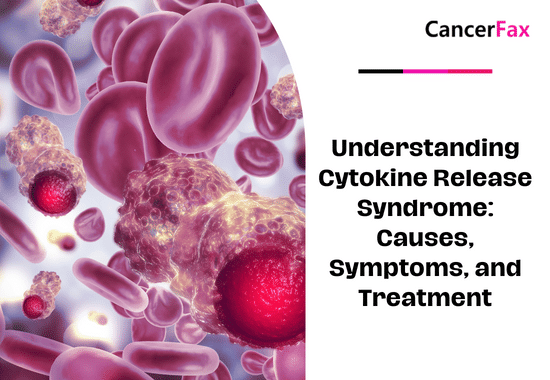Cytokine Release Syndrome (CRS) is an acute systemic inflammatory response characterized by fever and multiple organ dysfunction, often triggered by infections or certain immunotherapies. It is a potentially life-threatening condition that requires prompt recognition and management.

Pathophysiology of Cytokine Release Syndrome
CRS occurs when large numbers of white blood cells, including T cells, B cells, natural killer cells, macrophages, dendritic cells, and monocytes, are activated and release inflammatory cytokines. This release creates a positive feedback loop, further activating immune cells and leading to widespread inflammation. The excessive cytokine release can result in systemic symptoms and, in severe cases, multi-organ failure.
Causes and Triggers
CRS can be triggered by various factors, including:
- Infections: Severe infections can lead to an overwhelming immune response, resulting in CRS.
- Other Medical Conditions: Conditions like graft-versus-host disease and autoimmune diseases may also precipitate CRS.
Clinical Presentation
The clinical manifestations of CRS can range from mild to severe and may affect multiple organ systems. Common symptoms include:
- General Symptoms: Fever, fatigue, headache, rash, and myalgia.
- Cardiovascular: Hypotension, tachycardia, and in severe cases, shock.
- Respiratory: Tachypnea, hypoxemia, and acute respiratory distress syndrome (ARDS).
- Gastrointestinal: Nausea, vomiting, diarrhea, and elevated liver enzymes.
- Neurological: Headache, confusion, delirium, seizures, and in severe cases, cerebral edema.
Laboratory findings often reveal elevated levels of inflammatory markers such as C-reactive protein (CRP), ferritin, and interleukin-6 (IL-6).
Grading of CRS Severity
The severity of CRS is commonly graded to guide management:
- Grade 1 (Mild): Mild symptoms; intervention not indicated.
- Grade 2 (Moderate): Therapy or infusion interruption indicated but responds promptly to symptomatic treatment.
- Grade 3 (Severe): Prolonged symptoms; hospitalization indicated for clinical sequelae.
- Grade 4 (Life-threatening): Life-threatening consequences; urgent intervention indicated.
- Grade 5: Death related to CRS.
This grading system assists clinicians in determining the appropriate level of care and intervention.
Management and Treatment Strategies
The management of CRS depends on its severity:
- Supportive Care: For mild cases, supportive care including antipyretics for fever and intravenous fluids for hydration may suffice.
- Monitoring: Continuous monitoring of vital signs and laboratory parameters is essential, especially in severe cases, to detect and manage complications promptly.
Prevention and Risk Mitigation
Preventive strategies focus on minimizing the risk of CRS, particularly in patients undergoing immunotherapy:
- Pre-Treatment Assessment: Evaluating patients for risk factors such as high tumor burden can inform treatment planning.
- Dosing Strategies: Implementing step-up dosing or fractionated dosing schedules can help mitigate the risk of severe CRS.
- Prophylactic Medications: Administering prophylactic tocilizumab or corticosteroids in high-risk patients may reduce the incidence and severity of CRS.
These strategies aim to balance the efficacy of immunotherapies with the minimization of adverse effects.